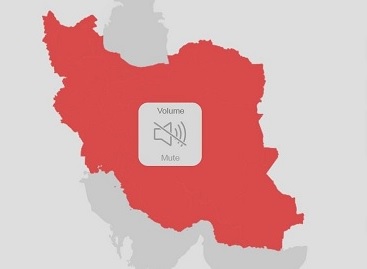After about 9 days, we have the chance to be connected to our viewers and readers. Almost many people in the world are aware of what has happened in Iran since Nov. 15th. However, few may know about to the website owners and the way that they had to deal with their customers. This is a brief history of both.
On Nov. 15th, Friday morning when the Iranians waken up they heard a short news; By the decision of the Government, since 00:00 clock of the same day the price of fuel has been tripled. This was a shock for about 85% of the Iranians who live under the poverty line and suffer a big deal of expenses of vital goods. Previous experience of increasing the fuel price during Mahmoud Ahmadi-Nejhad had shown that with increasing of the fuel price everybody has a reason to increase the prices and the Government doesn’t have enough power to control the prices.
It took just few hours that the people in southern cities of Khuzestan decided to protest against the decision, and the protests flashed and extended town by town and cities by cities. When the Government felt that such a rush may take to control out of the hands of the Government the anti-riot corps started their mission to back the disciplines into the streets and this by itself promoted the people to send their reports, icluding videos to the media outside Iran.
As soon as these media started their breaking news, the Government had only one way; To make the internet useless with slowing its speed. This ended to the greatest communication cut-off in the contemporary history. Let’s re-publish the news from the view of MIT Technology Review (without any objection on it). This media writes:
“What has happened: Protests erupted across Iran on Friday after the government unexpectedly announced its decision to ration fuel and remove subsidies, sending prices soaring by at least 50%. The move is part of efforts to mitigate the effects of crippling US sanctions on Iran’s economy. In response to the demonstrations, Iran’s government almost instantly started to shut off internet access for its citizens, starting in Mashhad, the country’s second-biggest city.
Blackout: Iran’s largest mobile network operators all fell offline on Saturday, and there is now a near-total internet and telecommunication blackout inside the country. National connectivity is at 5% of ordinary levels, according to NetBlocks, an NGO that monitors internet freedom.
Shooting itself in the foot: Iran’s government is trying to stop protesters from organizing, and media outlets from reporting on the protests. NetBlocks said it is the most severe disconnection it’s ever seen in any country, in terms of technical complexity and breadth.”
While the shutdown might temporarily disrupt protests, it will do nothing to address their underlying causes, and may make the situation even worse for the government. Despite the fact that internet shutdowns are increasingly favored as a tactic by authoritarian regimes, they leave people feeling even more aggrieved (see Kashmir) and have a deeply negative impact on the economy.” (Source)
This sudden situation resulted in a total cut-off of all private websites (and in first few days all websites) from the international network of internet. The least result for us here at PIMI was that we have to always keep the latest backup of our website at our local office in London.
By the way, before we start our routine services, we wish to apologize for what we have not been responsible for it. Hoping this would have been the last time.












